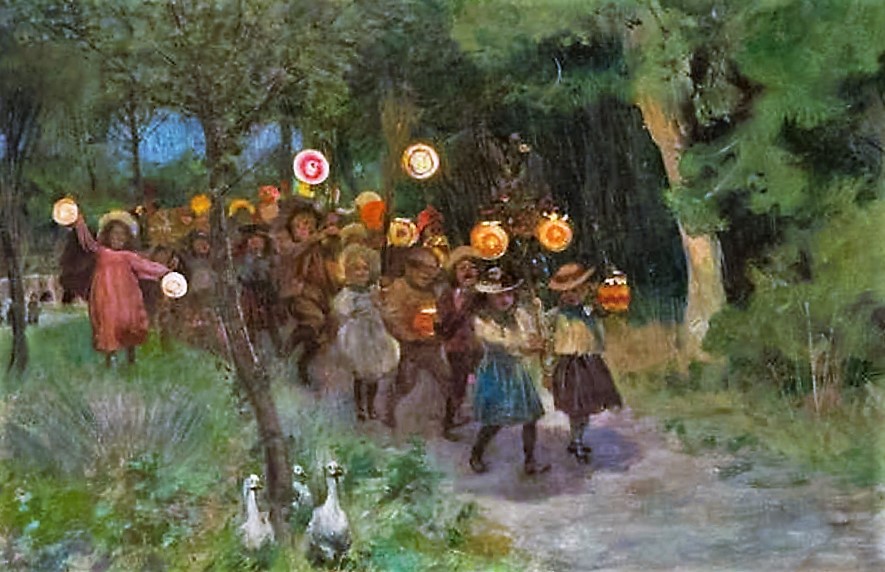How Did Halloween Begin?
Samhain, an Ancient Celtic festival
Halloween’s origins can be traced back to antiquity. Most point to Samhain, a Celtic festival which commemorated the end of the harvest season & the blurring of the physical & spirit worlds, as Halloween’s origin. Over the ages, the ancient, pagan Celtic holiday evolved, taking on Christian influences, European myths, & American consumerism.
Samhain was one of the most important & sinister calendar festivals of the year. At Samhain, held on November 1, the world of the gods was believed to be made visible to humankind, & the gods played many tricks on their mortal worshippers; it was a time fraught with danger, charged with fear, & full of supernatural episodes.
Sacrifices & propitiations of every kind were thought to be vital, for without them the Celts believed they could not prevail over the perils of the season or counteract the activities of the deities. Samhain was an important precursor to Halloween.
Ancient Celts marked Samhain as the most significant of the 4 quarterly fire festivals, taking place at the midpoint between the fall equinox & the winter solstice. During this time of year, hearth fires in family homes were left to burn out while the harvest was gathered.
After the harvest work was complete, celebrants joined with Druid priests to light a community fire using a wheel that would cause friction & spark flames. The wheel was considered a representation of the sun & used along with prayers. Cattle were sacrificed, & participants took a flame from the communal bonfire back to their home to relight the hearth.
Early texts present Samhain as a mandatory celebration lasting 3 days & 3 nights where the community was required to show themselves to local kings or chieftains .the ancient Celtic festival of Samhain, when people would light bonfires and wear costumes to ward off ghosts. Failure to participate was believed to result in punishment from the gods, usually illness or death.
There was also a military aspect to Samhain in Ireland, with holiday thrones prepared for commanders of soldiers. Anyone who committed a crime or used their weapons during the celebration faced a death sentence.
Some documents on Samhain, the Celtic festival mention 6 days of drinking alcohol to excess, typically mead or beer, along with gluttonous feasts.
By A.D. 43, the Roman Empire had conquered the majority of Celtic territory. In the course of the 400 years that they ruled the Celtic lands, two festivals of Roman origin were combined with the traditional Celtic celebration of Samhain.
The first was Feralia, a day in late October when the Romans traditionally commemorated the passing of the dead. The second was a day to honor Pomona, the Roman goddess of fruit and trees. The symbol of Pomona is the apple, and the incorporation of this celebration into Samhain might explain the tradition of bobbing for apples that is still practiced on Halloween.
On May 13, A.D. 609, the Christian Pope Boniface IV dedicated the Pantheon in Rome in honor of all Christian martyrs, & the Catholic feast of All Martyrs Day was established in the Western church. Pope Gregory III later expanded the festival to include all saints as well as all martyrs, & moved the observance from May 13 to November 1.
By the 9th century, the influence of Christianity had spread into Celtic lands, where it gradually blended with & supplanted older Celtic rites. In A.D. 1000, the church made November 2 All Souls’ Day, a day to honor the dead. It’s widely believed today that the church was attempting to replace the Celtic festival of the dead with a related, church-sanctioned holiday.
All Souls’ Day was celebrated similarly to Samhain, with big bonfires, parades & dressing up in costumes as saints, angels & devils. The All Saints’ Day celebration was also called All-hallows or All-hallowmas (from Middle English Alholowmesse meaning All Saints’ Day) & the night before it, the traditional night of Samhain in the Celtic religion, began to be called All-Hallows Eve &, eventually, Halloween.
All Saints' Day
On May 13, A.D. 609, Pope Boniface IV dedicated the Pantheon in Rome in honor of all Christian martyrs, and the Catholic feast of All Martyrs Day was established in the Western church. Pope Gregory III later expanded the festival to include all saints as well as all martyrs, and moved the observance from May 13 to November 1.
By the 9th century, the influence of Christianity had spread into Celtic lands, where it gradually blended with and supplanted older Celtic rites. In A.D. 1000, the church made November 2 All Souls’ Day, a day to honor the dead. It’s widely believed today that the church was attempting to replace the Celtic festival of the dead with a related, church-sanctioned holiday.
All Souls’ Day was celebrated similarly to Samhain, with big bonfires, parades and dressing up in costumes as saints, angels and devils. The All Saints’ Day celebration was also called All-hallows or All-hallowmas (from Middle English Alholowmesse meaning All Saints’ Day) and the night before it, the traditional night of Samhain in the Celtic religion, began to be called All-Hallows Eve and, eventually, Halloween.
See: History.org, Halloween 2023, August 11, 2023
Library of Congress Blog, The Origins of Halloween Traditions, October 26, 2021, by Heather Thomas






++Morning+Graden.jpg)
+Woman+Beside+a+Chestnut+Tree.jpg)
.In+the+Pergola+1892.jpg)
++Alice+Hoschede+in+the+Garden.jpg)
+Woman+Reading+in+a+Garden.jpg)
+Dziewczynka+z+koszem+jarzyn+w+ogrodzie+1891.jpg)
+Young+Woman+in+a+Rosegarden+1899.jpg)
+Marie+in+the+Garden.jpg)
+In+the+Garden+1870.jpg)
++Peonies+1889.jpg)
+Dutch+woman+in+a+garden.jpg)
.jpg)
,+Iris.jpg)
+Picking+Flowers.jpeg)
+Lady+picking+flowers.jpg)
++In+the+Garden.jpg)

+Picking+Wild+Flowers+1905.jpg)
+Afternoon+in+the+Park+afternoon_in_the_park-large.jpg)

+Reverie.jpg)
+Oriental+Poppies.jpg)
+The+Parasol.jpg)